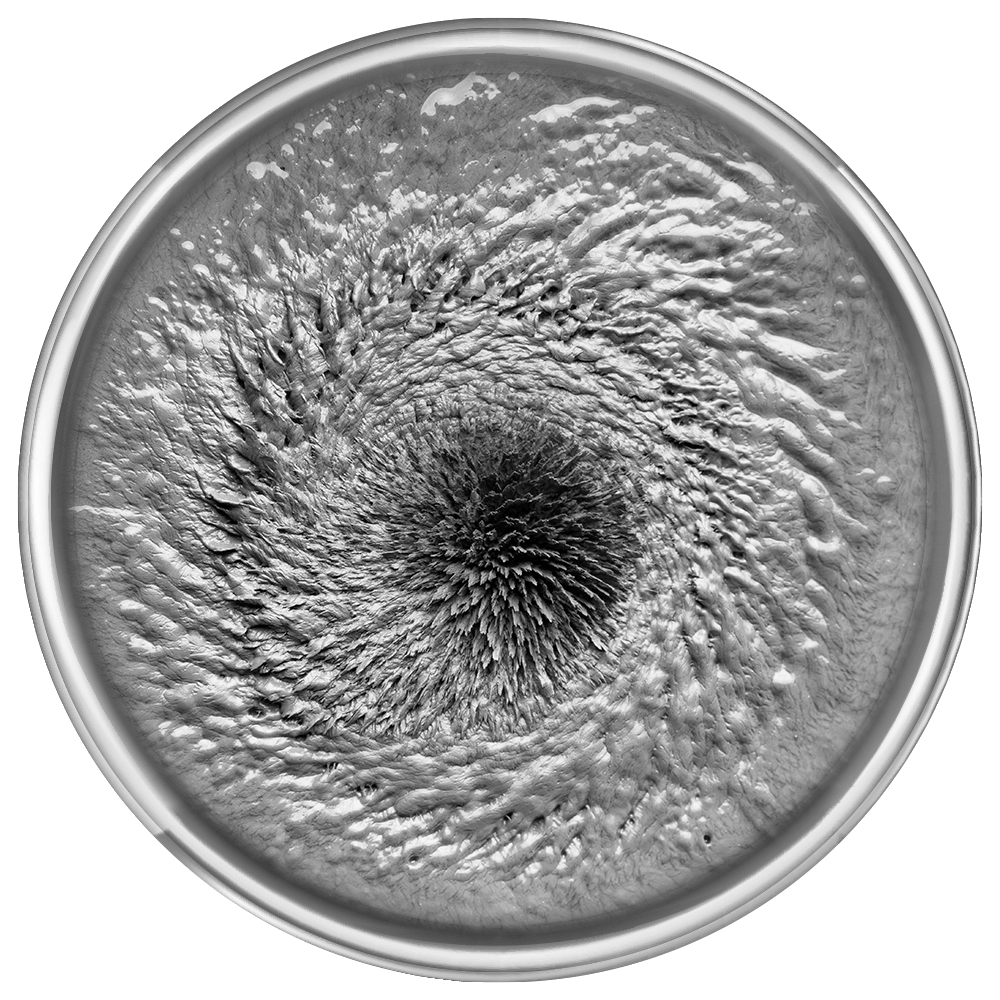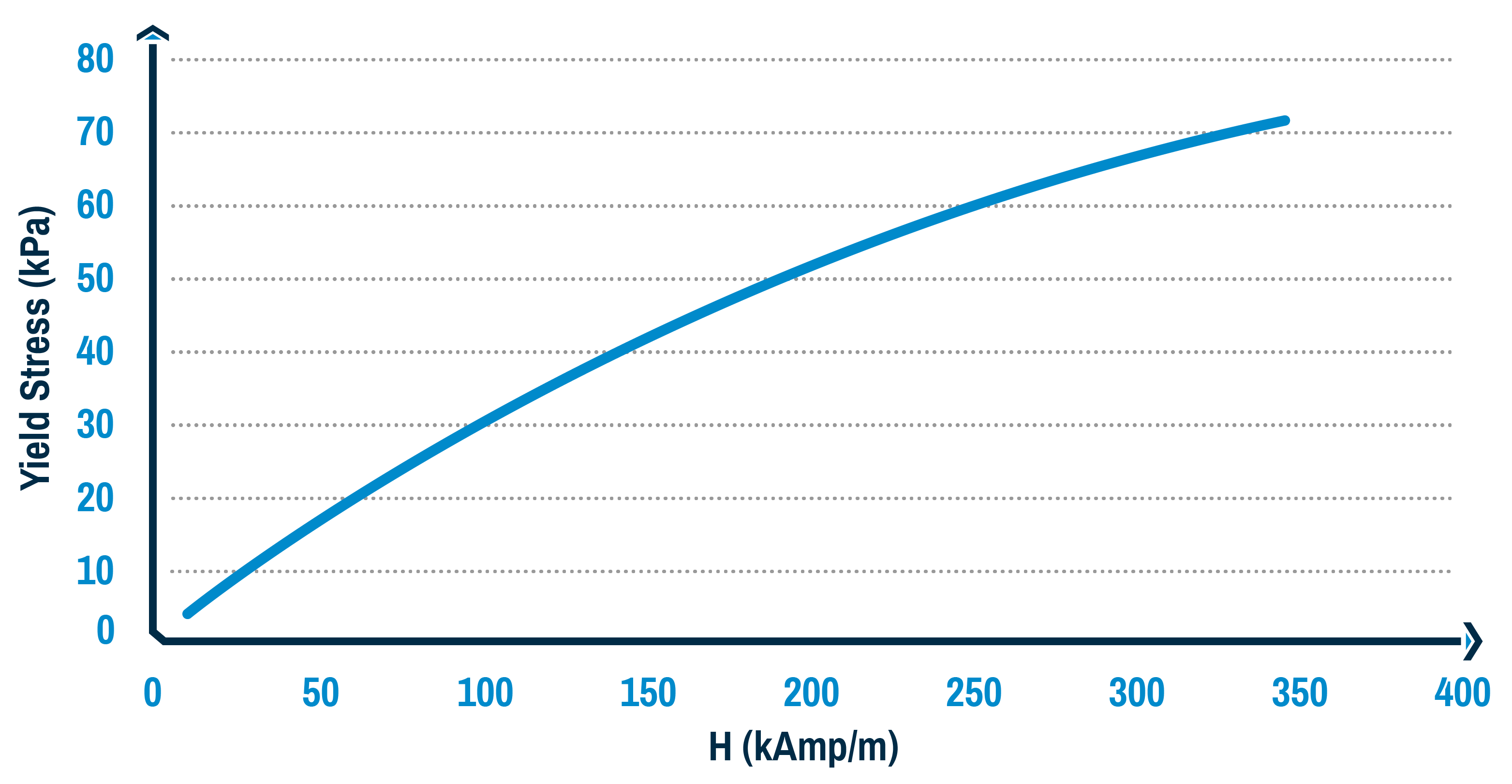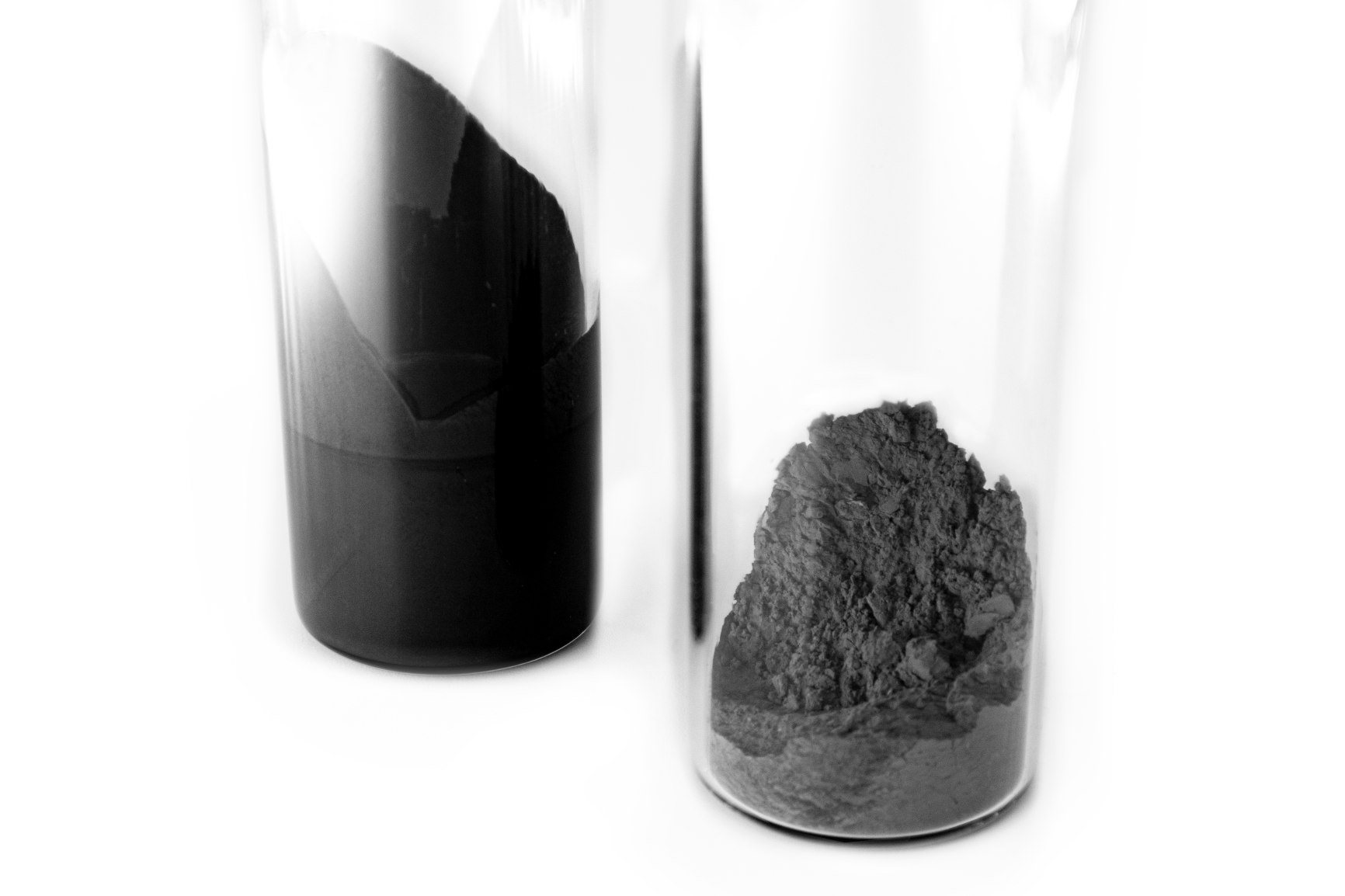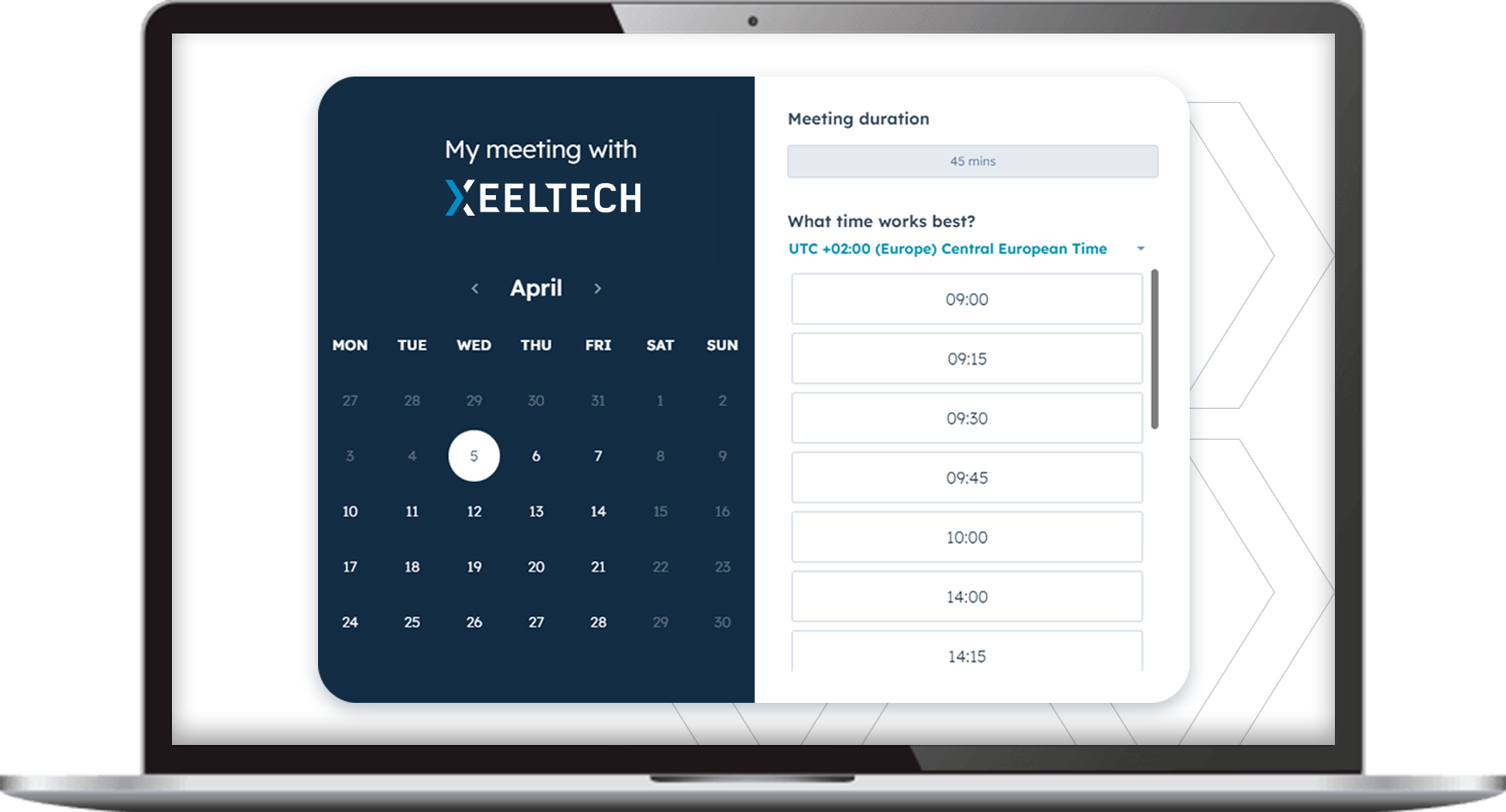The main difference between magnetorheological (MR) fluid and ferrofluid lies in their composition and behavior. The biggest difference is in the size of the particles: While MR materials contain particles on a micrometer scale, ferrofluid particles are on a nanometer scale and thus about 1000 times smaller.
MR fluid consists of magnetic particles dispersed in a carrier fluid, and its rheological properties, such as viscosity and stiffness, change in response to an applied magnetic field. The alignment of magnetic particles in the field leads to increased viscosity and stiffness. On the other hand, ferrofluid is a colloidal suspension of magnetic nanoparticles coated with a surfactant, dispersed in a carrier liquid. Even when a magnetic field is applied, ferrofluid remains fluid-like and forms distinct spike-like structures.
While MR fluid is commonly used for its controllable rheological properties, ferrofluid is known for its unique response to magnetic fields and is often employed in applications such as sealing, heat transfer, or damping. However, in contrast to MR damping technologies, ferrofluids are typically employed in specialized damping applications that require fine control over small-scale movements and vibrations. Examples include loudspeakers, but also other precision instruments, and microelectromechanical systems.





